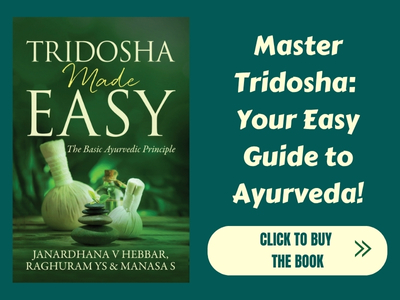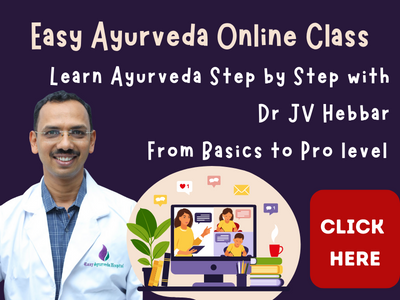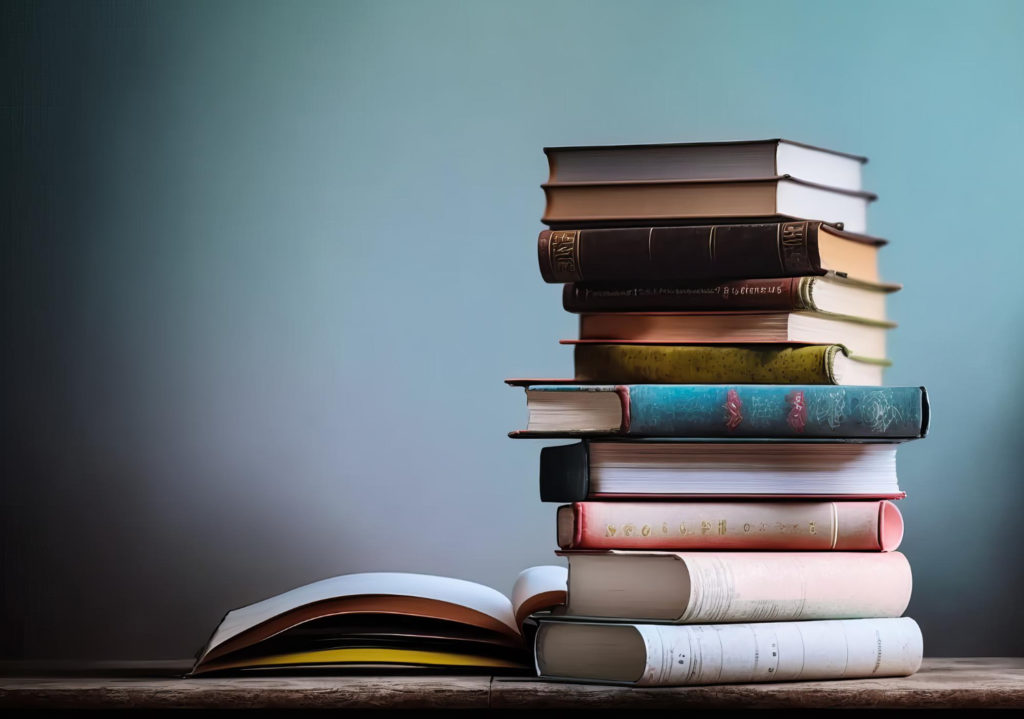I am now 33 and a few health changes are more than evident already. too much spicy foods have become less tolerable, so also the Sun, so also late night works. If we divide our lifespan into three, then the first one third is dominated by Kapha Dosha and middle one third is by Pitta Dosha.

So, once you reach 30 years, some lifestyle changes should be made to counter balance Pitta effect. Here are a few steps that I am trying to take.
Avoiding direct sun light –
I am trying my best to stand under shade or to wear a cap or take an umbrella with me. Direct sun exposure directly increases Pitta. So, avoid it as much as you can.
Less spicy food – More spicy stuff you take, more will be Pitta imbalance. So, just cut it down a bit.
Having a bit more of milk and ghee – Ghee increases digestion strength and at the same time, decreases Pitta. Hence, it is ideal. It also keeps gastritis away. Hence, ideal for people with sensitive stomach. Both milk and ghee are said to have Rasayana effect (anti aeging), hence good to have. Just a small spoon of ghee per day does not cause any weight gain. Stop worrying.
Stop worrying – all childhood days are over, now my own child has taken my place at home, so time to be a grown up. I am trying to be a bit more organized. Do planned work.

Stop being angry – Anger and Pitta are related, more you lose your cool, more will be the inside hotness (=pitta). Hence, try to avoid anger with the help of Yoga and Pranayama. Remember, during tensions…. breathe easy.
Taking Amla – Amla regularly helps to keep Pitta balance. Either amla powder or amla fruit are good to have at least few times a day. Related – Curds amla recipe
Reduced fasting frequency – I am not an ardent follower of fasting principle. Hence, reduced it a bit, to keep stomach health. If you are a strict follower of fasting, then it is fine. Or else, go easy on this.
Sleep and wake up on time – Any amount of work lag, leftover at night, I just transfer it to next day. Sleeping and waking up early has become paramount. If we divide night into three, the first half is dominated by Kapha Dosha. Hence, going to bed at this time means, getting good sleep. Sleep is influenced by Kapha Dosha. But if we postpone sleep to later hours, Pitta will be dominant by that time, leading to dizziness and headache, the next morning.
Including bitter substances in diet – Coriander seeds, turmeric, curry leaves, neem leaves.. anything is bitter is good to have. Generally bitter, sweet and astringent tastes balance Pitta. We need to be a little careful with sweets. Though it balances Pitta, it may cause weight gain. Hence, betting on a few bitters is a better option.
Apply coconut oil to hair regularly – to avoid hair loss and grey hairs. Grey hairs is due to Pitta imbalance. Related – make Amla hair oil at home
Avoid mustard oil for cooking. If you are accustomed to it by birth, then no harm in continuing it. If it is replaceable, consider other options. Any other cooking oil is good to go.
Stop smoking and reduce on alcohol – Not related to me. Is it to you?
Avoiding sitting for long periods of time – Now-a-days many reports are saying that sitting for long is as bad smoking. Hence, I roam here and there once a while during work.
Avoid too hot water bath – I have totally quit taking pure hot water bath. It is only just lukewarm or cold water baths these days. Related – hot water vs cold water bath.
Weekly oil massage – I have made it a point to self message with Maha Narayana taila. You can even do it with plain sesame oil. Though massage is not very directly related to Pitta, it is very well related with Vata, which dominates after we cross 50. So, some precautions now is always good. When I do not have time, I follow a quick massage technique.
Pranayama – I was already doing it, but now more regularly. It helps to control anger. Anger is related to Pitta. I can think more clearly and work more organizedly on those days when I have done Pranayama, than other days. How to do Pranayama?
Raisin and almonds – At about 10 pm, soak 5 black raisins and 5 almonds in water. Next day morning, before food, peal the almond skin and eat it along with the swollen raisins. Both these help to keep Pitta under check.
Regular intake of Amla – We have less spicy amla pickle at home. But there are also other ways to eat amla
Pitta diet – Basically any fruit, vegetable or dietary item that is sweet, astringent or bitter plus, it should have calming effect over stomach (should not cause burning sensation in stomach) and should be more on nourishing side (than on cleansing side). Any such food is good for Pitta control. Here is a small ingredient list for Pitta Diet
So, these are a few changes that are worth considering after you reach 30. This will help to avoid Pitta symptoms like early gray hairs, gastritis, piles, liver complaints, eye disorders, etc.










60 comments
Sudhakar
Dr. Hebbar, just wonderful article on reaching 30 plus. Wish i had got it during my 30 plus. Nevertheless please also carry article on 60 to 90 which is vata period. Thanks in advance.
Dr J V Hebbar MD(Ayu)Author
Sure sir. I will write about it. Thanks for suggestion.
p.k.sharma
VERY INFORMATIVE & PRECAUTIONARY INFORMATION ….
Sumathi
Very useful article Doctor. Please elaborate on ‘early to bed and early to rise’. What’s the ideal time to sleep and wake up. And how to bring back Pitta balance when work routine forces one to sleep late.
Dr J V Hebbar MD(Ayu)Author
Hi, I have written articles about ideal time to sleep. Read here – easyayurveda.com/2014/09/03/what-is-the-right-time-to-sleep-how-to-plan-your-sleep/
Regarding balancing Pitta (and Vata) for late sleep, taking half a teaspoon of ghee in the evening, just before evening beverage helps.
Anon
Dr. Hebbar, these days many of us have vitamin D deficiency due to not being exposed to sun. IT Guys more so. Don’t you think avoiding sunlight will aggravate the problem.
Dr J V Hebbar MD(Ayu)Author
I only meant to say to avoid scotching Sun, during afternoon hours.
sss3amitg
Great work Dr. Hebbar…… God bless you……. you are very correct about exposure to hot sunlight…..it shoots the pitta up…….Wearing a hat/cap, good quality sunglasses, and good quality, non PVC footwear in the sunlight can help those who have to go out in the hot sunlight as a part of their work…..
Your entire approach to this blog is one of innovation and the spread of the ancient wisdom of Ayurveda to the common people….this will help in making Ayurveda popular and help remove the misconception that this is a “slow” treatment….
Please talk more about Pitta dosha in your upcoming posts, as this one of the commonest and most debilitating conditions and people wonder what is cause their symptoms….. God bless you in your task!
Dr J V Hebbar MD(Ayu)Author
Hi, thanks for kind encouragement. Will surely attend to Pitta more in coming days.
Manish
Its also mentioned in the article to increase milk and ghee intake, both are sources of vitamin D
Vishwas Shewale
Dear Dr Hebbar
Excellent article.. your social work in health sector is highly appreciable
Dr J V Hebbar MD(Ayu)Author
Thank you.
Dyundar
Direct sun “avoid it as much as you can.”
That is a very dangerous statement. We all need vitamin d. There is an epidemic in the west with vitamin d deficiency. I know of people who turned their health issues around by increasing vitamin d from supplements and dramatically increasing sun exposure. Sure if you have aggravated pitta perhaps reduce but most people need more sun exposure. Especially in winter months.
Dr J V Hebbar MD(Ayu)Author
I only meant to say to avoid scotching Sun. Not during early morning or late evening hours.
Gaurav
Right on target! Shooting several birds (ailments) with one arrow (dosha balance).
One question: Sometimes even in summer, one feels a little cold occasionally. What is the reason for this?
Dr J V Hebbar MD(Ayu)Author
As per Ayurveda, The Kapha that is collected / solidified during winter season, liquefies in Summer. This leads to spreading of Kapha Dosha from chest to other areas. This causes cold symptoms or worsening of asthma in a few etc.
Gaurav
Are there any ways to counter this problem of liquefying Kapha in Summer? Can something be done to get the liquid Kapha out of the body quickly without heating the body more in the process? Can a doctor help with some customized suggestions perhaps?
Dr J V Hebbar MD(Ayu)Author
Hi, that is why, Vamana treatment is prescribed to let out liquefied Kapha out of body.
Even the salt water drinking and vomiting, as prescribed in Yoga, helps to let Kapha out to some extent. But for Vamana, you definitely need an Ayurveda doctor.
lakshmidevinair
your article is very useful for all
who care for health. Age is immaterial, the guidelines are good for all age groups.Very practical too. All my best wishes. I will practise them. R P Nair, Ernakulam
Dr J V Hebbar MD(Ayu)Author
Thanks.
yoganand
Dear Sir
Last couple of days i haven’t seen your mails
Dr J V Hebbar MD(Ayu)Author
Hi, I do not write articles daily.
poorna
loved it …….. all tips relevant to contemporary lifestyle………. the one about greying hair everything……. very useful and informative……….will adopt……..thanks a lot
austere
An update for the 50’s would be v nice… I have become something of a sun-addict, I need my 9 am sunlight dose…
Dr J V Hebbar MD(Ayu)Author
Article for 50+ – … coming up 🙂
K. Parasuraman
Very informative artile. Thanks. Looking forward to the next instalment for Seniors.
paula
well, I´m 31 so I guess I must follow your advice
Dr J V Hebbar MD(Ayu)Author
All the best 🙂
vijaya
appreciate the work.Could you pl.talk about glaucoma and cataract in future article.
Santha
Very informative… Looking forward for 50+ article
kishore kumar
when to take amla ,morning or evening or night, before food or after food.?
Dr J V Hebbar MD(Ayu)Author
Amla can be taken at anytime of the day, irrespective of meal time. It can be taken before or after food. Read more here – easyayurveda.com/2011/11/18/how-to-eat-amla-fruit-and-amla-powder-based-on-your-body/
Gaurav
Coconut oil can be a little ‘freezing’ (particularly at higher latitudes) so I’m also wondering about an alternative, but is sesame oil not too warming for everyday use on the head? Any other herbal oils that might be better than plain sesame oil in this regard?
kishore kumar
Thank you very much Dr Nature for replying my query.
Veena hande
Hi, enjoyed the article. It is said that we should avoid fermented and sour food, but our staple breakfast consists of idli and dosa which are prepared from fermented batter. It is also true that these are healthy, so what is the the truth? According to Ayurveda which food is good for breakfast ? Thanks for the good work.
Dr J V Hebbar MD(Ayu)Author
Hi, it is not true that fermented foods are bad. Even buttermilk is a product of fermentation, which is widely prescribed in a variety of diseases.
mankindthoughtANAND KUMAR RICHHARIYA
Write something for the age period 60+.Your explanation is beautiful and always liked by the readers.
Dr J V Hebbar MD(Ayu)Author
Hi sir, thanks for suggestion. I will write.
Mithra
Respected doctor,
Can you throw more light on this topic for women in particular who have crossed 30 yea mark? I am a working mother and leading a hectic stressful lifestyle.
Do you have any easily sustainable implementable tips that would help maintain strength?
Mithra
Dr J V Hebbar MD(Ayu)Author
Hi, the above tips are applicable to both men and women.
Loveson
Thank you for very informative article. Kindly elaborate on the usage of Mustard oil as to why it is not to be used pls.
Can you also advise any literature which sensitizes more on ayurvedic lifestyle.
Thank you
Dr J V Hebbar MD(Ayu)Author
Hi, Mustard oil is very hot in nature, hence not ideal for Pitta. I will write a detailed article about it in near future.
Regarding Ayurvedic lifestyle, I have written a book regarding it. Details – https://www.easyayurveda.com/buy/
Samskar Ebyaha
Can you explain more on the splitting up of the night into 3 aspect? What happens distinctly during these times. Maybe a separate article on this will be good.
Dr J V Hebbar MD(Ayu)Author
Hi, here is the article – https://www.easyayurveda.com/2014/09/11/tridosha-influence-body-sleep/
N.M.Gururaj
Does coffee and tea also trigger Pitta, sir?. I get severe migraine if I ever drink coffee. The write up is very informative and useful for after 30s.
Aby
Helpful article. Indeed required now that am 33. I am already seeing grey hairs 🙁 and gastritis (gas reaching back causing backache) is becoming a daily issue.
Lifestyle is the main cause but difficult to change it.
Dr J V Hebbar MD(Ayu)Author
We may not try drastically to improve all aspects. But small efforts are always good to put in.
A Deva Raju
Dear Dr Hebbar,
Thanks for wonderful article and it is an eye-opener for adults who have crossed 40 years of age. All points are
worth remembering and to follow in our day to day life to keep our health under control. We wish you all the best and looking forward to learning more health tips from you in the near future.
A Deva Raju
Dr J V Hebbar MD(Ayu)Author
Welcome sir 🙂
deepa
Does pitta imbalance cause hair fall? Box most of us complain about hair fall just after 30….
SURINDER SINGH
very informative and interesting.please write about vata dosha like tinitus and its remedies.
Dr J V Hebbar MD(Ayu)Author
Sure.
rrindia8
nice info. i have observed that my father and grand father are more active than what i am in my early 30s. main reason is they didnt have longtime sitting job they were active whole day. its main cause that they dont have diabetis, spondilytis etc. so exercise is must.
i still remeber i asked my friend’s grand father about his fitness at the age of 92. he told me if you exercise for 3 days it will give benefit of whole week. I (grand father) exercised for 33 years which is enough for 90yrs. in short he wants to say exercise atleast 45 mins daily .
Dr J V Hebbar MD(Ayu)Author
Hi, with regular exercise, intake of food rich in anti oxidants, like food rich in Vitamin A, C and E, avoiding junk foods and bad habits, BP can be lowered, but a cure cannot be promised.
Dr J V Hebbar MD(Ayu)Author
You can find some details here – http://en.wikipedia.org/wiki/Simarouba_glauca
I may take a long time, before writing about it.
Sandy
Dear Dr. Hebbar,
Why is it necessary to peel the almonds before eating?
Dr J V Hebbar MD(Ayu)Author
But some opine that peels slower the absorption. But some opine that peels contain all the nutrients. So, not a mandatory thing to do.
Gaurav
Peels are heavier and hence difficult to digest for some.
HOSHI KAPADIA
Always wonderful Dr. Hebbar. Since years I am an ardent admirer of your writings and have amassed great knowledge of Ayurveda thanks to you.
Dr J V Hebbar MD(Ayu)Author
Welcome 🙂
Jai Ayurveda.